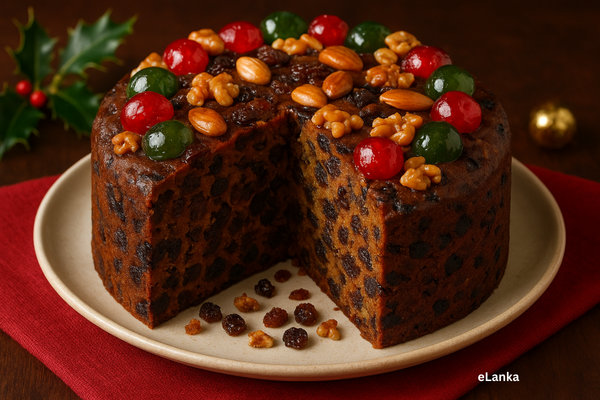Path to inner peace and happiness-by SAMANGIE WETTIMUNY
Source:Sundayobserver
Following are excerpts from an interview with reputed Theravada bhikkhu and renowned Meditation Guru Ven. Ajahn Suchart Abhijato Maha Thera of Thailand.
Q: How would you describe the status of the mind of; i) a Sovan ii) a Sakkuddagami iii) an Anagami. Could you explain in detail what his/her capabilities and remaining defilements are?
A: A Sotapanna has got rid of three defilements or fetters – the first fetter is the wrong view of seeing the body as himself or herself. A Sotapanna sees the body as a natural phenomenon – a work of nature made up of the Four Elements which is subjected to change – creating sickness and death. So having understood this phenomenon, a Sotapanna can let go of his/her attachments to the body and just has no fear over the body becoming old, becoming sick, or dying. A Sotapanna looks at the body as if looking at the weather – the weather could change from snow to rain, rain to a storm, or drought.
So the body is like that. It is a work of nature; no one can stop it from becoming old, becoming sick, and dying. And by seeing this, those who have reached Sotapanne status let go of their cravings for the body to exist forever. As a result, a Sotapanna sees how the stress or suffering in the mind disappears and sees the Four Noble Truths in real-time.
Therefore, a Sotapanna has no doubt whatsoever in the Dhamma – the teachings of the Buddha. And consequently, he/she has no doubt in the Buddha himself – whether he existed or not, A Sotapanna does not doubt the Sangha, the Noble Disciples, because he has become one. And a Sotapanna also sees the working of the mind that causes Dukkha, stress, or suffering – that cravings and bad Kamma cause suffering. So a Sotapanna does not do any more bad Kamma. Even if he has to die he will not do any bad Kamma to protect his life.
Thus the three fetters that a Sotapanna has got rid of are;.
1) The wrong view of the body of himself/herself.
2) The doubt in the Buddha, Dhamma, and the Sangha
Ven. Ajahn Suchart Abhijato Maha Thera
3) Not clinging to rites and rituals or no attachment to rites and rituals. (The rituals have no place in Buddhism, It is bad Kamma that causes you suffering because they harm and cause danger to the mind, not anything else. So there is no need to do any rituals, the only ritual a Sotapanna would do is to keep the Five Precepts forever.)
A Sotapanna would then move up to the second level, called Sakuddagami by contemplating the unpleasant aspect of the body.
So that a Sotapanna can diminish/lessen sexual desire. But it has not completely disappeared yet, If the sexual desire is lessened by 50 percent you become a Sakkuddagami. That means his sexual desire is much less than that of a Sotapanna. But as just mentioned it has not yet completely disappeared, because a Sakuddagami has not yet contemplated the Asuba nature of the body.
Once he reaches the stage where he can see the body as being Ashuba or unpleasant at all times (when he ‘sees’ the skeleton of the body every time he sees a body) then a Sakuddagami has achieved Anagami status or has reached the third stage in his process to Enlightenment. So an Anagami has completely got rid of two more fetters –sexual desire and feeling sad, lonely, or unhappy due to the consequence of having sexual desires. When these two fetters are got rid of then the Noble Disciple can see the body as being unpleasant at all times, So this is the third level of Enlightenment.
An Anagami still has five more fetters or defilements to get rid of. The attachment to Janas – Roopa raga, Aroopa raga, conceit, restlessness, and ignorance are the remaining cravings that he has not got rid of. He still has an attachment to the concept of a body /self. He still looks at the mind as the self, although he does not look at the body as the self, and this he has to get rid of. An Anagami hasn’t completely got rid of the mental stress left in the mind.
Q: Many Buddhists engage in meritorious deeds and expect in return a better life for them in their next birth or in this birth itself. Isn’t this a craving?
A: Yes, it is considered a craving, It keeps them being reborn again and again. But if they engage in meritorious deeds in order to stop rebirth, then it cannot be seen as ‘craving’, but a cessation of cravings or cessation of suffering. If you engage in/practise all three meritorious deeds that the Buddha had wanted us to do namely Dana, Seela, and Bawana, you can stop being reborn. If you are just doing one, or the first two (Dana and Seela), then you will be reborn. You have to do the third one which is Bhavana in order to stop your rebirth. But firstly, you need to do/practise Dana and Seela for you to be able to do Bhavana. So, you have to do all three of them in order to stop your rebirth.
4) The ultimate goal of Buddhism is attaining Nirvana. So is it proper for Buddhists to expect or wish for any material benefit or comforts (such as a better job, more wealth, good health, and good marriage) in return by making an offering to an Arhant or by engaging in Ten Meritorious Deeds mentioned in Buddhism?
A: If you practise completely the teachings of the Buddha you will get to the ultimate goal of Nibbana. But if you practise partially, you will only get partial results. That is what it is.
So if you only practise Seela, (morality/ keeping the Five Precepts) and practise charity, the consequences of these two practices will give you birth in heaven, And when you come back to the world of human beings, you will come back richer than you are now. So whether you like it or not, this is what happens and some people just still want to return and live on this earth, they forget that being born will get them sick and die again. They only think of the good things they can do if they become rich. So a lot of people practise the teachings of the Buddha only partially.
Usually by practising/keeping the Five Precepts (Seela), and practising charity (Dana). By doing this they have/get a happy mind and when such a person dies the mind goes to heaven and once the acquired merit expires they will be born as human beings again. He will be born as a wealthy human being due to his past Charity and Seela practices. But if you practise the third one – Bhawana then you will not return to this world but will reach Nibbana. So it is up to you.
It is like a menu in a restaurant. You can choose the food you want to eat. If you want to get the complete/full course, then you will get the ultimate result of Buddhism, the supreme bliss of Nibbana, but if you only want to practise partially – only some part of the Buddha’s teachings – then you will get some of the good results instead of Nibbana.
Q: The first path/one of the Noble Eightfold Path is Samma Ditthi (the right view.) Could you explain the exact meaning of Samma Ditthi as described in the teachings of the Buddha? How crucial is it (having the right view) in the process of developing the other seven (eg: Samma Sathi, Samma Samadhi etc) factors
A: The Right View/ Samma Ditthi is to know the Four Noble Truths, to see that suffering is caused by our cravings. For us to stop our cravings, we have to develop the Noble Eightfold Path. So when we have developed Samma Ditthi, we have the first factor of the Noble Eightfold Path which will initiate the other factor to fall into place. If you know that your rebirth is caused by your cravings and your suffering is caused by your cravings then you have to stop your cravings. And what you should do to stop your cravings is to practise the Noble Eightfold Path’s remaining seven factors.
The second (Samma Sankappa) is to think continually of stopping your cravings – your bad Kamma because your bad Kamma and cravings are the causes of your mental suffering. Once you have the second factor – to think of stopping your cravings – then you develop the third one (Samma Vaca) and the fourth one (Samma Kammantha) which are right speech and right action. The fifth one is Right livelihood, then the sixth one is right exertion, the seventh is right mindfulness and the eighth is right meditation or right concentration. So once you have the first one (Samma Ditthi), then the other seven will follow suit.
To have Samma Ditthi according to Buddhism is to know the Four Noble Truths – to see that our suffering, aging, and death are caused by our own cravings and the path to stop the suffering is the Noble Eightfold Path.
Q: Could you explain the concept of non -attachment in Buddhism and how it helps to lead a happy life while being faithful to social commitments? (family life, office work, education, etc)
A: Attachment or clinging means being attached to things that will be separated from you one day.
Everything is anicca – everything is temporary. So when you cling to things and when the same thing has to be separated from you, you will become sad. So being non-attached means you can have things, but still, you have to be ready to let go of them/things when the time comes (such as your body). Your body is anicca (impermanent).
One day everyone has to die. If you cling and have a craving for the body to exist forever, then when the body starts to age and dies finally, you will undergo a lot of suffering. But if you know that the body is temporary and one day it will have to die, then you don’t cling or get attached to the body when the time comes.
When it is not yet the time for the body to go (decay and die), you can still have it, but you have to know that you have to let it go when the time comes. That is what non-attachment is.
You can still have what you already have, but you have to tell yourself that what you have now, you won’t be able to have always. When the time comes, you have to let go of them without feeling sad.
Ven. Ajahn Suchart Abhijato Maha Thera was born on November 2, 1947. Having completed his degree in Civil Engineering at California State University, Fresno, USA, he returned to his motherland where he designed an ice cream parlour for a brief stint.
Quite soon, inspired by a Dhamma book, he decided to go in search of ‘true happiness,’ to find inner peace through the practice of Buddhist meditation. He became a bhikkhu at the age of 27 and received ordination at Wat Bovornives in Bangkok on February 19, 1975, with Somdet Phra Ñanasarivara, the late Supreme Patriarch (Somdet Phra Sangharaja), as his preceptor.
Ven. Ajahn Suchart Abhijato Maha Thera resides in Wat Yansangwararam, Thailand
























